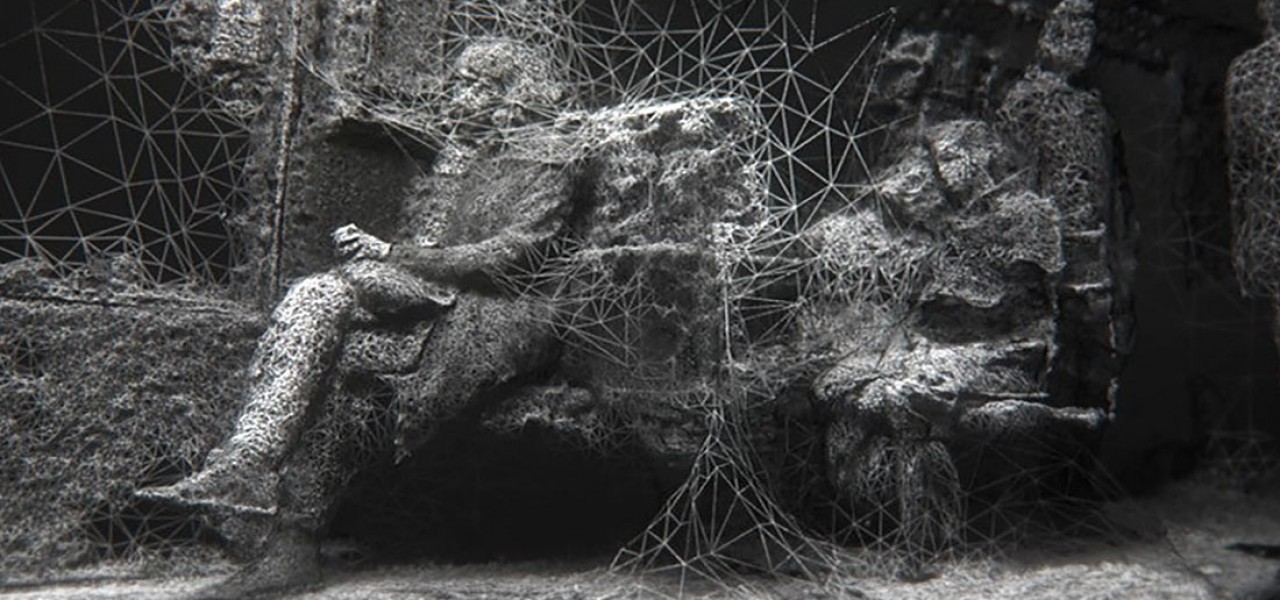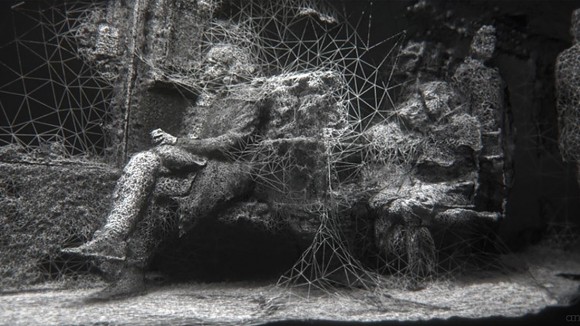

‘Ghost Cell’ Uses Cutting-Edge CG Tech To Reveal A New Side Of Paris
Paris might just be one of the most photographed and filmed cities in the world. But you’ve never seen it like this.
Director and CG artist Antoine Delacharlery’s Ghost Cell re-imagines daily life in the French capital in almost microscopic – but somewhat imperfect – detail using point cloud and wireframe imagery. Indeed, the tag line for the six-minute short is “a plunge into the guts of an organic Paris seen as a cell through a virtual microscope.”
The idea to offer such a vastly different perspective of the city came from two places. First, Delacharlery had observed just how much 3D scans generated with LIDAR (laser scans) or photogrammetry (multiple single photos combined to create accurate 3D models) were becoming part of architecture and filmmaking. The use of 3D scanning in those areas is, of course, intended for measurement purposes, but the director considered the resulting images to have their own ghostly and mysterious qualities.
The second was the story Delacharlery wanted to tell about Paris. “The film talks about the expansion of life and the similar patterns between human structure and patterns of nature,” he explained to Cartoon Brew. “There was actually a scientific study that compared the growth of a mushroom and the route of a city road, and it was exactly the same pattern.”
Delacharlery acknowledges a third inspiration; Godfrey Reggio’s 1982 experimental film Koyaanisqatsi, which included slow motion and time-lapse footage of cities and landscapes across the U.S. All this merged with the director’s real life experience as a child living near Paris. “I would always take the Paris ring train – the RER,” said Delacharlery. “So I wanted to talk about the idea of commuting [‘migration pendulaire’ in French]. I thought comparing the human flow with the swarming of microscopic life would be a good idea.”

In order to bring all these inspirations together as a short film, Delacharlery started testing some 3D scanning techniques. “I tried the Microsoft Kinect first, but then I ended up using only photogrammetry, mainly with Autodesk’s 123D Catch. I think photogrammetry was the best technology here, for multiple reasons. It’s really cheap – you just use a camera, you can scan really big structures and you get great textures. For the final look, I searched to find some nice stuff in the bugs that came out of these techniques.”
At various locations in Paris, Delacharlery captured scans of buildings, people and other scenes. There could be between 20 and 60 photographs making up one scan. The resulting 3D scene might be from just one scan or multiple scans combined to be a mix of completed geometry, wireframes, and the ‘buggy’ look the director was after. Some scenes reached up to six million polygons in terms of geometry.

Then the animation side of the film could begin. Using Autodesk’s 3ds Max, Delacharlery and a small team took the 3D scans and made subtle, and sometimes more than subtle, movements to the action. “All the 3D scanned models came from reality, and that’s what was really interesting for me,” he said. “It was about finding out how to show the organic qualities of a high-tech 3D capture.”
An interesting extra dimension to Ghost Cell comes in the form of stereoscopic version of the film that can be viewed with anaglyph glasses, those with red and blue lenses, providing an even more immersive experience. “I think the stereoscopic version goes well with the wire frame side and transparency aspects of the film,” said Delacharlery.
At some points in the largely black and white short there are also slight hints of color. The director calls this the film’s ‘secret color.’ “I used a lot of the textures from the 3D scans so I had all the color of them to use. With color, the pictures are really different. I was surprised, actually, for some of the scans made with just one camera, the level of detail is just crazy. And the textures made it even more realistic.”

Having tapped into the LIDAR-like imagery that has populated some other music videos and animated projects of late, Delacharlery has a surprising observation on where the technique might pop up again. “Well, they already use 3D scans for many applications, including Google’s self-driving robotic cars which incorporates multiple cameras for 3D visualizations. I like how the ‘3D scan vision’ is how the car’s computer ‘sees’ the world around it.”
Ghost Cell was produced by French production company Autour de Minuit and has been released at several festivals, winning the audience prize at the Clermont-Ferrand International Short Film Festival. You can see more of Delacharlery’s work at his website and YouTube channel.
Ghost Cell key credits
Director: Antoine Delacharlery
Producer: Nicolas Schmerkin
Script: Antoine Delacharlery
Music: Bastien Prevosto
Editing: Antoine Delacharlery
